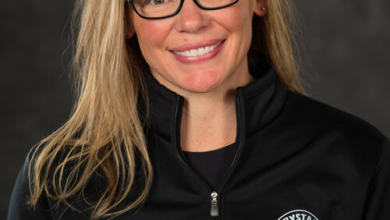Apple Watch Temperature Data Now Syncs to Natural Cycles, the Birth Control App
If you have an Apple Watch Series 8 or Ultra and you use the Natural Cycles app, you’ll now be able to use temperature data from your smartwatch to feed the birth control algorithm, Natural Cycles announced Tuesday.
Natural Cycles is the only cycle-tracking app cleared by the US Food and Drug Administration for use as birth control. Unlike other period-tracking apps, Natural Cycles requires daily and extremely consistent basal body temperature measurements to detect ovulation and predict someone’s “fertile window,” the handful of days when someone is able to become pregnant.
The Series 8 and Ultra models of the Apple Watch, as well as the new Series 9 and Ultra 2 watches, come with temperature sensors that, when you wear them to bed overnight, may collect subtle temperature shifts that occur during the menstrual cycle. Basal body temperature can also be measured accurately if taken first thing in the morning with a basal thermometer, which Natural Cycles provides with its $100 annual subscription. But the hope is that automatic temperature-tracking abilities found in wearables like the Apple Watch and Oura ring, which Natural Cycles has also gotten clearance to pair with, will make the whole process easier.
Natural Cycles CEO Elina Berglund Scherwitzl said in a press release that after Apple added temperature sensors to its watches, Natural Cycles started clinical tests on whether data from Apple’s wrist temperature sensors could be used for its own algorithm.
“We were thrilled with the results, submitted them to the FDA, and with this clearance are excited to give our users the ability to seamlessly measure using a device many already own and love,” Scherwitzl said.
Importantly, the integration of Natural Cycles with some Apple Watch models doesn’t mean Apple’s cycle-tracking feature in the Health app should be used as birth control, or that any of its devices should be used as birth control. As the tech giant continues to expand its wellness reach, which includes the huge and ongoing women’s health study, it’s been clear that its ovulation and period estimates are just that, estimates, and shouldn’t be used as birth control.
However, the fact that the only FDA-cleared birth control app is capitalizing on big-name wearables that keep refining and improving their health-tracking metrics speaks to a larger trend toward considering fertility awareness a standard health issue. It also hints that the sky could be the limit when it comes to accessing (and actually using) health data that’s historically been hard to reach.
How Natural Cycles works as birth control
Natural Cycles works by collecting basal body temperature measurements and, over a few months, finding a pattern that can pinpoint when someone has ovulated and when they’re likely to ovulate next month. Temperatures are typically lower in the first half of the menstrual cycle, before ovulation, and rise very slightly (just a fraction of a degree) after ovulation has occurred. As the algorithm collects data from temperatures that you input, as well as your reported period days and other data, it will start to predict which days are likely to be fertile.
With perfect use, Natural Cycles says it’s up to 98% effective, which means using it exactly as directed by the app every day and abstaining from sex when it advises you to. But the issue — and a major criticism of temperature-based birth control or fertility awareness methods in general — is that it’s much harder to hit “perfect” use than with other types of birth control, including pills or IUDs. Common experiences like sleeping two hours more or less than normal, drinking alcohol and feeling sick all throw off your body temperature measurements and make data useless. Also, many people have irregular menstrual cycles that may be harder to track. (And the exact day of ovulation tends to vary even in people with very “regular” cycles, which is why it’s important to rely on other data besides just counting days.)
For these reasons, health care providers have typically recommended people use a different form of birth control other than basal body temperature tracking if they don’t want to be pregnant.
However, combining basal body temperature records with luteinizing hormone tests and cervical mucus tracking to identify fertile windows and upcoming ovulation can make methods like Natural Cycles more accurate.
Read more: Why Apple Is Moving Your Health Information to the iPad




